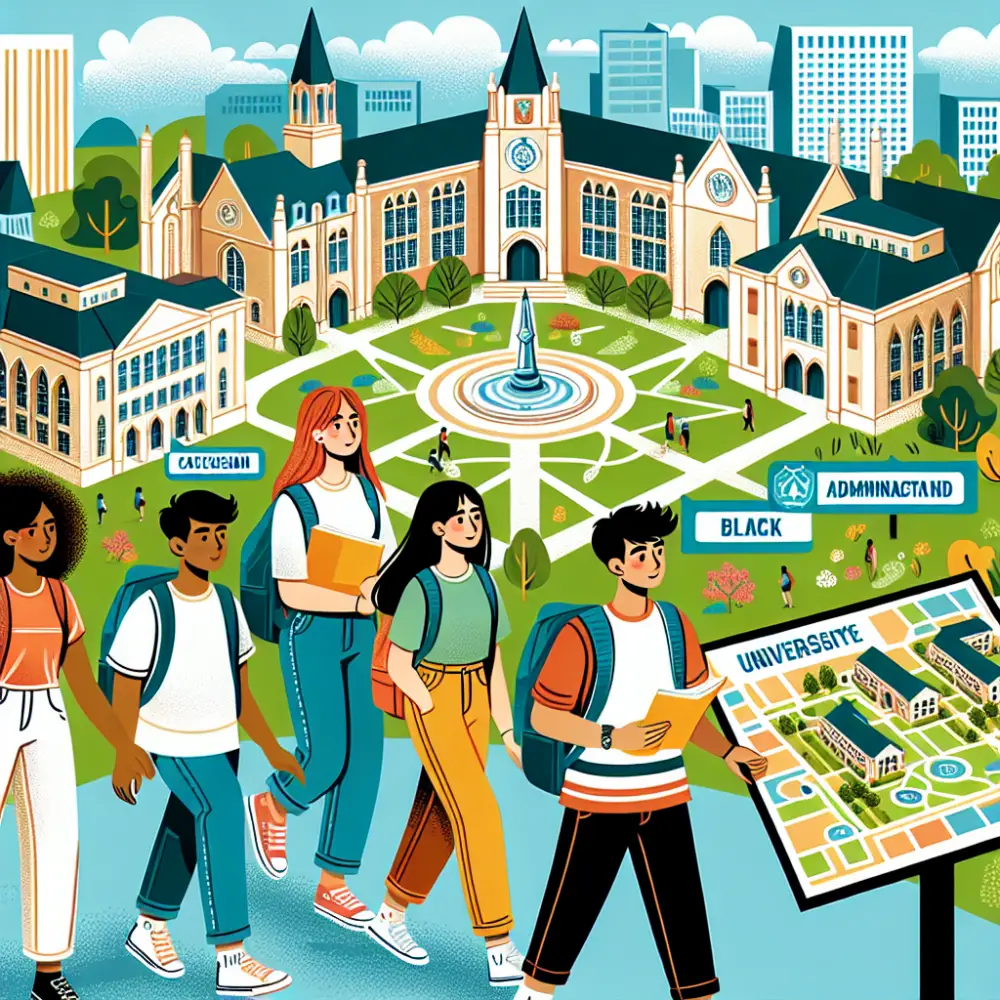
Every young person dreams of pursuing further education in a foreign nation. However, fulfilling this ambition requires a substantial financial investment and is not without its challenges. Applying for and receiving a scholarship can considerably cut the cost of your study abroad. What you’re about to read is the finest course of action. The persistent rejection of scholarship applicants raises the question of why.
Previous scholarship application failures should not be seen as indicative of future failures to be awarded funding for higher education. In addition, this rejection does not reflect poorly on your qualifications for the job in question. Perhaps you failed to account for some factor that would have favored you, or perhaps you were just uninformed of some piece of knowledge that would have helped you succeed.
The following are some potential justifications for the denial of your scholarship application. Though a man’s fall from grace does not have to spell the end of his life, it certainly makes things more difficult.
1. Late Application for Scholarship
The application deadlines will not be extended, so make sure this doesn’t happen to you. Many applicants wait until the last minute to send in their forms. It’s a gamble with your future if you wait until the last minute to submit your application. Get everything done as soon as possible, preferably at least a week ahead of the deadline and ideally a month. This means you can still double-check your paperwork and make any required adjustments before the deadline.
There is a danger that the application portal will be offline on the day the deadline is reached, making it impossible for applicants to submit their materials in time. Avoid having your application rejected by taking the essential precautions and submitting it at the right time. The scholarship application deadline is a hard and fast rule that will disqualify you from further consideration if you fail to submit your materials on time. Remember that sending in your application after the due date reflects poorly on your sense of organization. Many hopeful applicants start filling out their applications with great fervor and excitement, but they lose focus at some point. People may also unintentionally put off writing essays when faced with difficult assignments because they feel overwhelmed by the sheer number of essays required for scholarship applications.
One more reason deadlines may be missed is a lack of focus. If you’re drowning with scholarship applications and need some advice, consider setting up two reminders: one a month out from the deadline and another a week out from the deadline so you can get your application in the mail. As a result, you can more easily maintain control of the situation. Do not put off submitting an application for a scholarship by more than a week, as this will greatly decrease your chances of being selected. Whatever your schedule looks like, this piece of advice will help.
Check this out;Top 15 Soccer Scholarships in Europe, 2023
2. Not Eligible for Application
Most scholarship programs have specific eligibility criteria that must be completed before an application will be reviewed. This might be the applicant’s age, resume, topic of study, education level, or anything else of relevance. The scholarship might be restricted to students studying engineering or business; if you indicate that you want to earn a bachelor’s degree in marketing communications, for example, you can be sure that your application will be rejected. It is strongly suggested that all prerequisites be met before submitting an application for a specific scholarship. This will aid you in deciding whether or not to submit an application. Since it is a foregone conclusion that your application will be turned down if you do not meet the requirements, it is in your best advantage to not even bother. Not all scholarships have the same requirements, and the standards for any given grant may change from year to year. Despite the fact that you meet every eligibility requirement, it is still possible that you will be rejected.
Before submitting an application for a scholarship, it is important to familiarize oneself with the criteria for that grant in particular. If you do not meet one of the requirements for submission, such as having a first-rate candidacy, then you should not submit an application. You are a Ugandan national, yet it’s possible that only South African citizens are eligible for the award. The scholarship may be designated for those pursuing a Ph.D., yet you may be applying to a Master’s school. You won’t have to waste time and effort applying for a scholarship you might not get because of the selection requirements. Let’s check to see if our hopes are realistic.
Additionally, there is certainly no point in applying for the university award if you have not yet been accepted into the program for which the prize is meant.
3. Inavailability of Scholarships
More than a thousand people apply each year, however, they are all rejected due to this very issue. This is largely due to a combination of luck and skill and has little to do with how hard they worked. This issue concerns the total quantity of grant funds that can be distributed. If, for instance, 10,000 people apply for 100 scholarships, yet only 1,000 can be awarded, then there will inevitably be a large number of unsuccessful applicants.
That’s totally not a problem, especially considering how easy it is to obtain the bare minimum. Right now, nothing short of perfect execution will guarantee achievement. In order to make sure that all qualified applicants receive scholarships, it is common practice to increase the minimum score required to enter.
In the event that there are a thousand applicants for a hundred available scholarships, and the cutoff grade is 70%, what will happen? Could we keep 70% as a cutoff? To be more precise, the correct answer is “No.” This means the bar could be raised to at least 90 in order to attract a more selective group of candidates.
4. Submission of Incomplete Documents
In most cases, an application will be rejected because it lacks essential supporting documents. Applicants must carefully review the criteria and compile a list of all supporting materials before submitting an application. Don’t wait until the last minute to start gathering the necessary documents. Preparing a complete application packet for a scholarship will require some time and careful thought. Gathering the required materials should begin as soon as you decide to apply for scholarships.
Only the requested materials should be sent. Additionally, you need to make a duplicate of the documents and store the originals securely.
Preparing all of the necessary documents and properly submitting them to the scholarship website will increase the likelihood that an application will be accepted and processed. Be mindful of the deadlines associated with each scholarship you apply for and upload all necessary documentation on time.
You must include all of the requested materials with your application; incomplete packages will not be considered. While the application process is paused, you should double-check all of the files you’ve uploaded. Send in your application as soon as this is done, and hope for the best when the results come back.
Read slso; How to get a Student Visa in Norway – Step by Step Procedures
5. Not Meeting Language Requirement
One of the main reasons students are not given the scholarship is because they do not meet the criteria for the language requirements of the scholarship. Students whose native tongue is not English are often asked to show proof of language ability through the results of a standardized language exam. Students need to take tests like the TOEFL and IELTS to demonstrate their English proficiency. If English is used as the language of instruction, they will count on you to be fluent in the language.
Varying programs at the same European university may have very different language requirements for their undergraduate, graduate, and doctorate degrees. You can find details about the program’s specific language requirements on the homepage for the program in which you’re interested. All applicants must show that they are extremely proficient in the English language. In order to participate in any given program, the applicant will need to present documented proof of their English proficiency.
If you are applying to multiple programs at the same university and planning to take a language proficiency test as part of the application process, you will only need to send your results to the appropriate admissions office at that university. This holds true even if you are attempting to verify your linguistic proficiency with a battery of exams. Every language test’s results must be double-checked by the one who administered the test. However, if you have a degree that can attest for your language skills, you will need to submit as many transcripts or records as there are programs to which you are applying.
6. Wrong Spelling and Wrong Grammar
Grammar mistakes were yet another significant factor in the evaluation of your scholarship application, which was ultimately negative. A presentation that contains spelling errors, as well as grammar errors, is another reason for scholarship rejection. It’s possible that your application for a scholarship will be turned down without your knowledge. If there is even one misspelled word on your scholarship application, some of them will automatically place it in the “rejected” file. Everything needs to be proofread, and you need to check that your language is correct and that it is placed in suitable spots.
This demonstrates that your command of the language is very high. You are sending the message to the scholarship committee that you do not care all that much about whether or not you obtain the scholarship if you do not ensure that your application is sent in the best possible manner, including having the facts checked, nice paperwork, perfect spelling, etc. There are a lot of different ways that you could make mistakes in your application without even realizing it. There is probably not enough room to discuss all of the mistakes, but the following is an attempt to do so.
You are sending the message that you don’t care all that much about whether or not you obtain the scholarship when you don’t pause long enough to rectify the spelling problems in your application. Therefore, you need to read it all the way through to find the typos that spell check missed. And while you’re about it, make sure the language and punctuation are correct as well. Get assistance if you feel as though you require a second opinion.
7. Writing an unconvincing personal statement.
There is a good reason why colleges and institutions ask prospective students to submit a personal statement. The rationale for this is that they want to find out why you’re interested in pursuing this particular line of work, what your motive is for doing so, and how it ties to your level of ambition. For example, if your class is about growth, they want to know how you intend to contribute to the overall progression of society once you have accomplished your objective.
Putting together a compelling personal statement is absolutely necessary if you want to increase your chances of being awarded a scholarship. Your personal statement is your opportunity to persuade the selection committee that you should be awarded the scholarship. Even while your curriculum vitae could be extraordinary, there are probably hundreds, if not thousands, of students who are even more remarkable than you. A personal statement is a great approach to differentiate yourself from other candidates.
A personal statement is a brief summary of your accomplishments, talents, interests, and goals, which is commonly included in applications for institutions or scholarships, as well as on resumes. It is a piece of writing (usually approximately two pages long) that defines you to the best of your abilities, including your motives for choosing the program you have chosen, your research areas, your ambitions, and the innovative ways in which you may offer value to the program you are applying to. The people who will be assessing your application want to have the opportunity to learn more about you, your educational ambitions, and how the scholarship will aid you to continue your study, therefore the purpose of the personal statement is to provide them with that opportunity.
8. Provisions of Fake Documents
You may not only lose your eligibility for a scholarship, but you may also face jail time if you are convicted of this heinous crime. However, many applicants ignore this rule and submit what they consider to be their best work anyhow. Most application materials are verified for authenticity before they are considered complete. Original (scanned) copies of documents should be submitted to avoid having an application rejected on the grounds that they are fake or fictitious. If getting the original documents will cost money, you shouldn’t try to go around it. Contrarily, I advise you to not pay that price. Your application may pass the initial stages of verification, but you can rest assured that any forgeries will be uncovered. This is due to the fact that all submitted documents undergo a routine inspection.
You have probably damaged your reputation in numerous ways as a result of this, and it’s likely the reason your scholarship application was denied. For the simple reason that submitting additional applications to the same prize committee will almost certainly result in rejection. A scholarship board that discovers your history of dishonesty may share that information with other scholarship boards.
9. Absence of Proof-reading
Having a second pair of eyes review your work might help catch typos and grammatical errors that you might have missed. To add to this, before you send in your scholarship application, it is smart to get feedback from people who will be reading it for you, such as your referees. They’ll have a clearer picture of which of your strengths to emphasize if they wind up being asked to be a reference for you. If you want to get a response to your scholarship application, editing your essay is essential. Have you finished the project by carefully following all of the guidelines and responding to all of the questions? If there was a question or prompt, your essay should address it. To win the scholarship, your essay must respond to both the prompt and the required number of words.
You should use a spellchecker, but you shouldn’t take its suggestions too seriously. Check the spelling of the suggested changes. Verify that all possessive pronouns (such as “its,” “ours,” “your,” and “their”) are spelled correctly. When you should have been using your, have you been using you’re? Do you mean it’s when you type it or did you accidentally use the erroneous spelling? Get some outside help, such from your English teacher, if you can’t tell the difference between the two.
Top read; 7 Best Universities to Study Law in the World for International Students
A rejection of your application should not send you into a panic. You can rest assured that you will be successful the next time you apply for a scholarship even if you have tried before and failed for any of the reasons given above.













Let the financial Robot be your companion in the financial market. Telegram – @Cryptaxbot